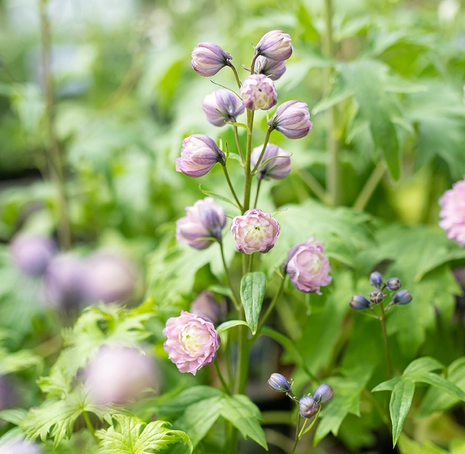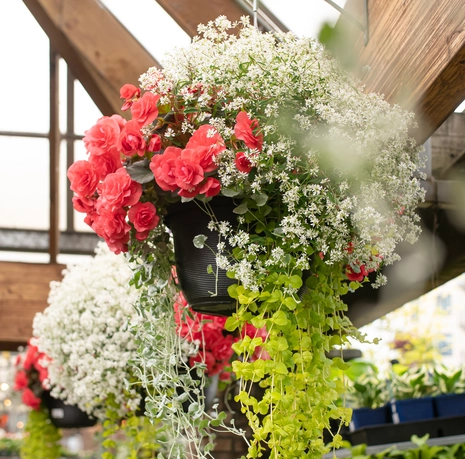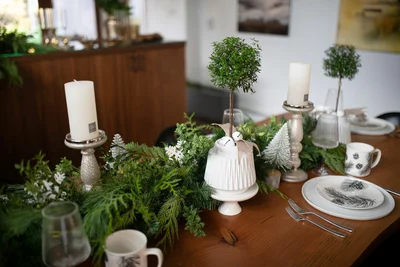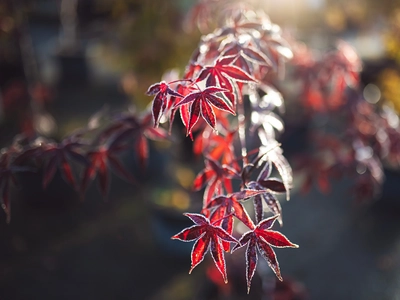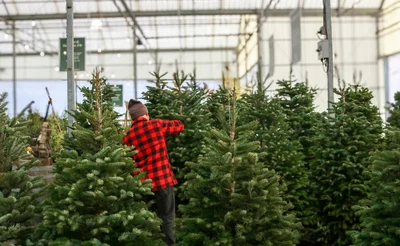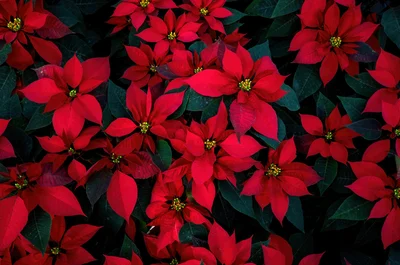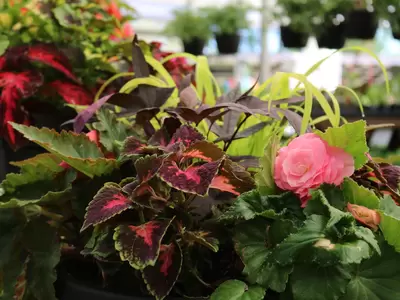
Written by Scott Pearce
Almost everyone has a dark corner that they try to avoid going to, don’t they? I’m talking about the shady corners of the garden of course, and they needn’t be that way! A shade garden can be filled with interesting, dynamic plants and should entice you to not only visit often, but to linger.
Discussions of shade gardening naturally begin with considering plants that will thrive in lower light conditions, though other factors should be considered as well. Consider soil conditions, sightlines that that garden will be viewed from, the intended use of the space, and choices for “hardscape” materials as well. If you are hoping to create an amazing space, or even just a shady nook, it will come in very handy to have a sketch of the site, with notes on your objectives and any challenges for each space within the garden.
Once you have a sketch drawn and have generally planned out your garden space, the fun begins – designers have some tricks they use to create beautiful vignettes and an overall “unified design”, as well as “go to” plants that they use in their designs time and again.
These following three approaches can be used if you are planning a larger shade garden, a small shady spot, a shady patio or balcony, or even just one planter for shade:
Embrace Plants with Colourful Foliage
Turn to shade lovers with variegated foliage to add colour and visual interest. There are many to choose from, this is a short list of just a few that will be considered designer’s “go to” plants for shade:
- Hosta – Dozens and dozens of varieties available. Amazing colourful foliage! Warning – it’s possible to get hooked on hostas.
- Siberian Bugloss (Brunnera) – Large heart shaped, eye-popping variegated silver and green leaves. Blue flowers in early spring are a bonus. Varieties include ‘Jack Frost’, ‘Silver Heart’ and ‘Looking Glass’
- Carpet Bugle (Ajuga) – evergreen ground covers that display low spikes of blue flowers in spring. Foliage colours range from the bold dark leaves of ‘Black Scallop” to the multi-coloured pink/white/green leaves of ‘Burgundy Glow’.
- Japanese Painted Fern (Athyrium niponicum ‘Pictum’) – Ferns are definitely favourites for the shade. Although the foliage of Japanese painted ferns disappears over winter, it reappears vividly each spring, with different varieties displaying shades of contrasting shades of silver, dark purple, silvery grey and green.
- Japanese Aucuba (Aucuba Japonica) – Large broadleaved evergreen shrubs with glossy variegated leaves. Great in the background, easily maintained to 120 – 150cm high. Some varieties appear as if they are dusted with gold specks, others have larger golden blotches. Big and bold!
These are only a few of a myriad of choices. Ligularia, Epimedium, autumn fern, Leucothoe and Pulmonaria are a few more – all go to plants for designers!
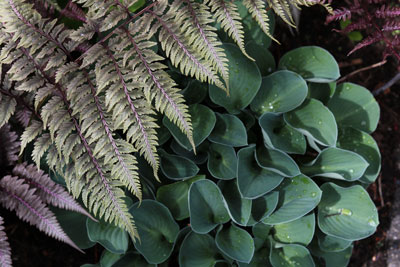
Contrasting Textures Create Visual Interest
Plants can be partly described by their texture – big & bold vs. light & airy. The contrast in their textures creates interesting combinations in gardens and in containers.
Bold Textured Favourites:
- Japanese Fatsia (Fatsia japonica)
- Oak leaf Hydrangea (Hydrangea quercifolia)
- Big leaved Hostas – varieties like ‘Empress Woo’, ‘Sum & Substance’ or ‘Sieboldiana Elegans’
- Japanese Skimmia (Skimmia japonica) – a broadleaved evergreen with the added bonus of fragrant early spring blooms
- Sword fern (Polystichum munitum)
Fine Textured Choices
- Maidenhair fern (Adiantum species) – a west coast native, deciduous fern species that is absolutely adorable on it’s own, but is fantastic combined with rock, or big beautiful hostas.
- Japanese Forest Grass (Hakenochloa macra) – several cultivars are available, featuring cascading, glowing variegated foliage.
- Pacific Bleeding Heart (Dicentra formosa) – another west coast native, with finely textured blue-green leaves, with the added bonus of arching stems of pink, heart shaped blooms that appear in mid-spring.
- Columbine (Aquilegia) – best in part shade, along the edge of a shady area. Lovely soft, light green foliage, topped with delightful spring blossoms.
- Sweet Woodruff (Galium odoratum) – fine textured ground cover that will thrive in dry shade, and produces masses of tiny white flowers in late spring.
Annuals Add a Pop of Colour
Annuals can be used in many different ways – from the big sweeping beds of colour that you see in display gardens to summer blooming hanging baskets. Leave room for small groups of shade tolerant annuals in your shade garden, to add little bursts of colour.
Top 5 annuals for shade:
- Impatiens – colour all summer long in shades of pink, red, white, mauve and orange. Sunpatiens are great choice for shade, despite the name.
- Begonias – there are many begonias that thrive in shade. Non stop begonias are fantastic, and begonias that we refer to as “wax-leaf” begonias do well in all but the shadiest spots.
- Coleus – Grown for their fantastic foliage colours, there are dozens of varieties with a wide range of colours
- Fuchsias – most often seen in hanging baskets, fuchsias with an upright habit are excellent performers in shade and great for attracting hummingbirds
- Browallia – for a subtle touch of colour in purple, blue or white, browallia is a good option for the shady garden
Read even more suggestions for shade gardening here.
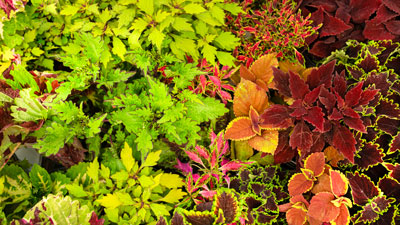
If you are lucky enough to have some shady spots in your garden or on your patio, give this approach a try, using some of these designer endorsed plants. You’ll be sure to create your own wonderful shady oasis!

